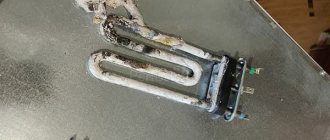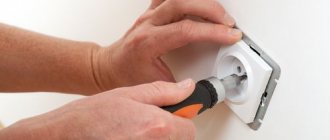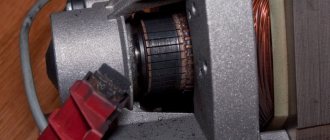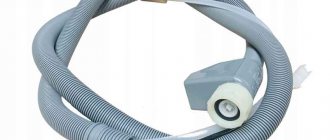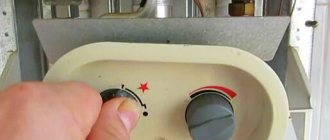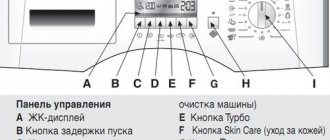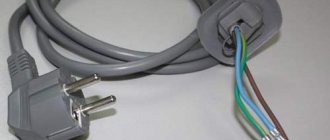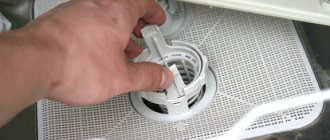Household appliances break down quite often during constant use. If your dishwasher won't turn on, don't call a professional right away. An independent inspection of the device will help identify minor faults that can be eliminated on your own. This will help save time and money. Significant breakdowns requiring expensive repairs occur infrequently.
Main causes of malfunction
What a shame it is when, having loaded a basket full of dirty dishes, you press the treasured “start” button, hoping to go drink coffee, but your faithful assistant refuses to work. Moreover, categorically!
What's the matter? The reason may turn out to be absurdly stupid, for example: for some reason one of your household pulled out the cord from the network... Or, having moved the machine a little while cleaning, he somehow stuck the same cord under it and it broke due to being crushed by a large weight technology.
It happens that the problem is not with the machine at all, but with a burnt-out socket to which it is connected.
If so, then everything is not so bad. In the first case, you just need to insert the plug into the socket, in the second, replace the cord, and in the third, reconnect the unit to another power source.
But there are even worse breakdowns and repairs are more expensive. If the first three reasons are not your case, still remain calm and only calm. You will always have time to call a specialist, but carrying out diagnostics yourself has never harmed anyone.
We present to you a list of the main reasons why the dishwasher does not start:
- The cord is broken in an inconspicuous place
- The door lock is faulty
- The "start" button is faulty
- Fuse burned out
- Water does not enter the chamber
- Broken program control unit
- Motor or relay burned out
- The pump is clogged
- Water supply hose squashed
In general, these are the main causes of breakdowns. Moreover, the third part of them is due to burnt fuses.
Now let's take a closer look at the signs of these popular malfunctions and perhaps you will be able to independently determine why the dishwasher does not start and the reasons for this.
See also -
Error codes for Bosch dishwashers
What to do if there is no indication in the dishwasher and it does not start
If your dishwasher does not react at all when turned on (even the power indicator does not light up), check first:
- Availability of electricity. Perhaps the outlet is faulty, the dishwasher has been knocked out, or there is no electricity in the entire house.
- The dishwasher's power plug and cord are in good working order. Inspect the dishwasher's power cord and plug. Before unplugging it from the socket, for safety reasons, it is recommended to turn off the electricity in the apartment at the switchboard. If you notice damage, leave the equipment unplugged and call a professional.
If everything is normal with the power supply to the dishwasher, most likely the cause is a breakdown.
If the car doesn't turn on at all
In this case, only the following reasons are possible, from the general list above:
- The cord is broken
- Capacitor burned out
- The door lock is faulty
- The button is faulty
- The software block is faulty
- Motor or relay burned out
Start diagnostics in order, with the cord.
Cord
To do this, you need to arm yourself with a multimeter. We set it to ohmmeter mode and connect the probes to the sections of the wire of interest.
If you find that some part of the wire is burnt out, then you should not save money and change it by inserting a new piece. Any twists and solders are a fire hazard and unreliable. And this can subsequently lead to a fire or more serious damage inside the machine.
Fuse burned out
To diagnose the capacitor, you will need to disassemble the machine. We recommend covering the floor with a cloth first, as residual water may leak out of the unit.
The fuses are located in the circulation pump, under the pan. Therefore, you must disassemble it following this procedure:
- Remove the front panel located under the machine door
- Remove the side fastenings from the pallet
- Open the door, unscrew the debris filter and remove the impeller
- Close the door, turn the machine over and remove the tray
- Find the fuse on the circulation pump
- We check the resistance with a multimeter.
If it is discovered that the fuse is faulty, you need to find a completely identical one and replace it.
The door lock is faulty
This is the easiest to diagnose.
Either the door closes or it doesn’t. If not... There’s nothing you can do about it, of course... You can’t do it without calling a technician, and from a service center that has the required part. Of course, if you are very well versed in such breakdowns and know how and with what you can replace a broken door part, then you are in luck!
The start button is faulty
If you don't clearly see that the button looks strange, then it's unlikely that this is the problem. Most likely, in other electronics, that is, the control unit. But, if the button is stuck or loose, then it is the culprit. Look for the necessary spare part, change it or call a specialist.
The software block is faulty
This is perhaps one of the most disgusting and expensive breakdowns. The repair is quite expensive and there is no way you can do it on your own. The entire block will have to be replaced. But, do not rush to blame it prematurely until you have checked absolutely all possible options.
Motor or relay burned out
The machine will need to be disassembled and these parts checked for electrical conductivity with a multimeter.
If they burn out, things are bad... These are expensive parts, of course.
Dishwasher diagnostics
After diagnosing all communications, you can proceed to inspecting the device itself. The Bosch dishwasher automatically blocks startup when:
- an open door or a malfunction of its lock;
- severely clogged filter;
- leaks;
- burnt out capacitor;
- malfunction of the unit and other breakdowns of the internal mechanism.
The machine door should close with a characteristic click; if it does not, a problem has probably been detected. Next, check the filters and, if dirty, clean them. Leaks are usually accompanied by a system message on the display, flashing of certain buttons or lights. An instruction will help here, which will decipher the error code or icon under the flashing light and tell you what to do next.
Before checking the condition of the condenser, the dishwasher must be disconnected from all communications. Capacitors (fuses) are installed on the circulation pump - use the instructions, as a rule, it contains a diagram and description of such a common problem. If replacement is necessary, purchase only similar capacitors (fuses). You can find a suitable one in service centers of household appliances or a specialized service center of the Bosch brand.
As mentioned above, read the information in your passport. There may be a list of reasons why the device does not turn on and ways to solve them. There may be such minor reasons as a malfunction of the electronics, an error in typing a program or similar, when it is enough to turn the device off and on.
How to fix a dishwasher yourself?
There are two typical problems with Bosch PMM models. They are associated with water. Users often complain about the appearance of the E15 code on the display. This indicates that the Aquastop protection has been triggered. But it's not always a matter of leakage. Follow these steps:
- Tilt the PMM body back and look into the pan.
- If there is indeed water accumulated there, drain it.
- Return the float switch to the "Off" position.
Sometimes the cause of operation is incorrect placement of the inlet hose gasket. It may have moved during installation. Therefore, make the connection according to the user manual.
Dishwasher won't turn on
Have you connected your machine to the network, pressed the "Power" button, but nothing happens? The lights on the panel do not light up and no sound signals are heard. Things to check:
- Network wire. Sometimes it bends if it is pressed against the body of the dishwasher during rearrangement. If you notice damage to the insulation, do not make homemade twists. This approach can lead to a fire. Replace the cord immediately.
- Fork. The presence of melts and burns indicates a breakdown. Install the correct element.
- Socket. To check its functionality, connect another device. Works? This means the socket is working.
It is worth checking the surge protector (capacitor). It is located near the engine. A visual inspection should alert you to swelling and burns. The part must be replaced. You can buy it inexpensively in an online store.
Leave problems with electronics and control unit to the specialist. Here you need accurate diagnostics, which is carried out with a multimeter.
Problems with water intake and drainage
In case of such a problem, simple carelessness should be ruled out. So, it's worth checking:
- Is the shut-off valve open? Perhaps it was accidentally blocked.
- Is the inlet hose level? If it is bent or pinched by a foreign object, water will not flow.
When installing a hose with Aquastop protection, you need to monitor its operation. When the system is triggered, the absorbent becomes saturated with moisture, causing it to block the passage. This is a one-time protection, so you need to completely change the hose.
It is important to service your dishwasher at least once every 1-2 weeks.
Maintenance includes cleaning the system from debris:
- Turn off the water supply.
- Disconnect the hose from the housing.
- Take out the filter mesh.
- Rinse it free of clogs.
- Check the operation of the intake valve. Inspect its holes. When debris gets in, the passage becomes clogged, making it difficult for the membrane to move. It does not open and no liquid flows.
If there are problems with drainage, the pump does not necessarily break. Check parts for blockages:
- Open the camera door.
- Remove the baskets from the hopper.
- There is a filter at the bottom.
- Unscrew and clean the part.
- Check the pump impeller. Pieces of food entering through the filter can block its rotation.
- Remove water from the hole.
- Remove the cover by pulling it towards you.
- Wear gloves and remove the clog.
Sensors and indicators
Determining which sensor is broken is a fairly simple task. An error code almost always appears on the display. Typical breakdowns are indicated by the following letters:
- E4 or F4 – problem with the flow sensor or clogged sprinkler nozzles;
- E6 or F6 – breakdown of the cleanliness sensor or electrical failure;
- E14 or F14 – failure of the sensor that regulates the volume of water.
A breakdown can be identified if the “brush” lights up on the display. The Bosch dishwasher does not turn on and the indicator light begins to flash rapidly. In this case, there are several options to solve the problem:
- A system failure is eliminated using a simple algorithm. First, you need to hold the program start button pressed for 3 seconds, then turn off and unplug the dishwasher for 15 seconds. The next time you turn it on, the indicator should go out.
- If water accidentally gets into the pan, its subsequent release from the liquid prevents the indicator from blinking and allows the machine to operate in the same mode.
- If the Aquastop system has worked, you need to look for and fix the leak.
- The absence of leaks indicates that the Aquastop button is stuck.
Also, the “brush” indicator can appear when there are blockages and interruptions in the water supply.
Further repair of Electrolux PMM
But this sensor is a fairly reliable element and rarely fails. Note that after dismantling the bottom cover, what immediately caught my eye was that there were traces of water and grease on all parts. And the Aquastop unit is also doused. This indicates that there is a leak that has caused the microswitch to fail.
On the first cycle, no traces of water were found. But it turned out that the car was not heating up. After checking the heating element, which in this model is flow-through, it turned out that it had burned out. Thus, two devices are already subject to replacement, but it is important to identify the cause of the leak, since it was precisely this that caused the breakdown of the dishwasher.
Flow-through heating element
The second run also did not give anything, but on the third attempt a leak appeared. Water flowed from the pipe, and the stream was directed to the heating element. The reason has been identified, and for proper operation, three parts need to be purchased and replaced:
- AquaStop system microswitch;
- flow heating element;
- damaged pipe.
Heating element with pipe
It is necessary to select in accordance with the serial number, which is located on the sticker on the right side of the door. It is important!
Vehicle code
After inspecting the pipe, a through hole was discovered, which was clearly caused by mechanical damage. It can be assumed that a hard element got inside the system, which damaged the rubber. There is a fine mesh on the inlet hose, so this could not happen through the water supply.
Pipe branch
Water heater
The only option left is through dishes. Apparently a wash cycle was run without filters and something got inside.
Expert opinion
I work in the household appliance repair industry. Extensive experience in restoring washing machines and dishwashers.
Ask a Question
Conclusion: it is imperative to clean dishes from large contaminants and check for the presence of protective nets.
The reasons why the dishwasher does not turn on were considered. This applies to different brands, because the PMM device is similar. The technical execution of certain processes, as well as parts, may differ. Unlike washing machines and dishwashers, there is practically no interchangeability.
